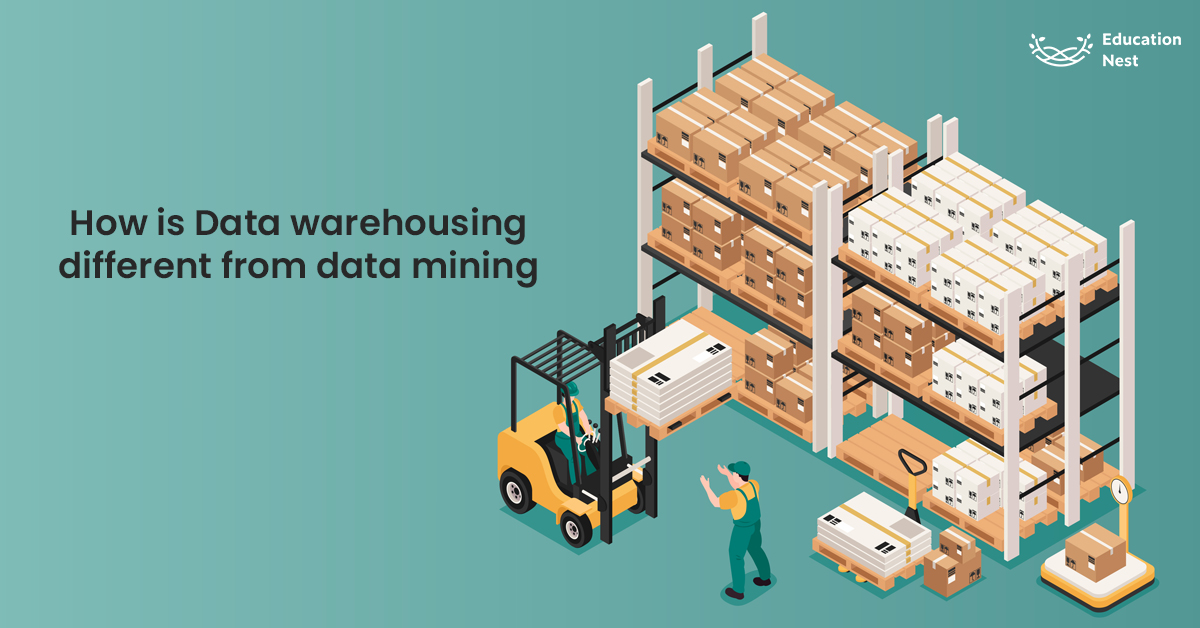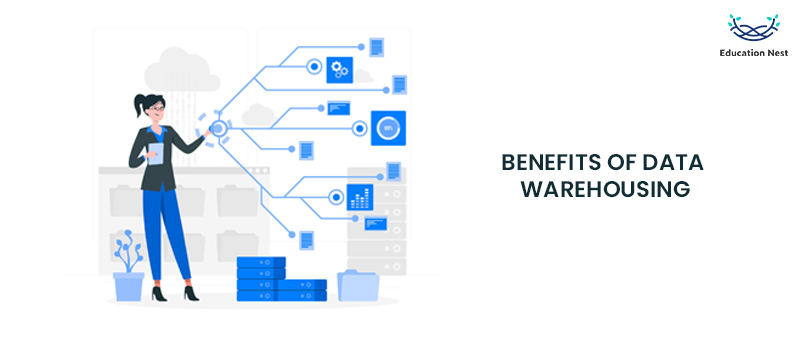
Data Warehousing and Data Mining are the two initial steps that take place when dealing with Big Data. The critical difference between data warehousing and data mining is: data warehousing refers to the collection of raw data, while data mining is the processing of the raw data into meaningful information.
This blog will help readers to understand the basics of data warehousing versus data mining.
Data warehousing
Data Warehousing is the central vault for storing large amounts of data and information to be used when needed. It allows us to collect and manage data that can be analysed for making informed decisions in future.
An organisation’s data warehouse is an electronic storehouse where information is recorded to answer queries, analyse and synthesise that information for various purposes. Data warehousing helps to make decisions that are backed by evidence.
Data warehousing takes place before converting raw data into sensible information. That processed data is then made available to different users to use as per their needs.
Data warehouse collects data from places such as transactional systems, relations databases, third party systems and direct customers, amongst others. This collection of data is then accessed by Data Analysts, Data Engineers, Data Consultants and Chief Information Security Officers (CISO) through Business Information (BI) tools.
Data warehouses store large quantities of data efficiently to reduce input and output. This makes sure that thousands of users can get their queries answered swiftly at the same time.
A data warehouse is constructed at three tiers,
- The first tier is the database server, where the data is uploaded and stored.
- The second tier is where the data is accessed to be analysed by data analysts and analytics tools.
- The third and topmost layer is where the data is presented to the clients through reporting, analysis and data mining tools.
A data warehouse contains several databases, and each database is made up of columns and rows. Each column can be used to describe data such as string, data field, et cetera. The tables are organised in folders, where when the data is ingested, it gets stored in various tables in folders.
BENEFITS OF DATA WAREHOUSING

Data warehousing can be used in various organisations such as retail, healthcare, and financial institutions apart from information technology firms. It can store a patient’s medical history and test reports OR save customer payment information and mailing address.
Now that we have understood data warehousing and its features let us take a look at how data warehousing is beneficial for us.
- Data warehousing helps to combine information from multiple sources in an arranged form. As such, one can be sure about the origin, quality and reliability of data.
- Data warehousing also helps in eliminating repeated as well as unnecessary data from the system. This reliable data allows the company to make informed and dependable decisions to reach its goals.
- A Data warehouse provides required information within seconds, in turn saving time looking up for information. One has to only deploy a data model as per need, and the information is received in the blink of an eye.
- A business can benefit significantly if all its data is available in a synchronised way. It ensures large amounts of data from various sources are stored in an orderly fashion.
- A data warehouse holds a sizable volume of historical data that users may examine to evaluate and finds patterns to create future projections. Having knowledge of past decisions and its effect can help in making better policies.
- Data Warehousing helps companies and individuals that want to stay in touch with their target audience and customers.
You Must Like: Google cloud certification that guarantees success and better pays
DATA MINING
Large volumes of data are sorted by using a process called data mining to find patterns and correlations in the data. The raw data is processed through various software to find clues that can help understand their customers effectively.
The sorted information can then be used to analyse data and find answers to business challenges. Enterprises can forecast future trends and make better business decisions using data mining techniques and technologies.
Corporations can utilise data mining for various purposes, including understanding the interests of their customers. Based on the information users supply or request, data mining systems analyse patterns and connections in data.
The use of data mining has come under fire recently. Since consumers are frequently unaware that data mining is occurring with their personal information, primarily when used to influence their preferences.
Data mining takes place in mainly 3 steps.
- Firstly, data is gathered by organisations and loaded into their data warehouses.
- The data is examined by business analysts, management groups, and information technology specialists using a data mining model, who then decide how to structure it.
- The end users are then presented with data in an approachable manner, such as a graph or table.
BENEFITS OF DATA MINING

- Data mining aids businesses in obtaining accurate information.
- Compared to other data applications, it is a productive and affordable solution.
- Businesses can profitably adjust their operations and production.
- It aids businesses in making smart choices.
- It aids in identifying fraud and credit risks.
- It makes it simple for data scientists to examine massive amounts of data quickly.
- It enables data scientists to swiftly launch automated behavioural and trend predictions and find covert patterns.
The key differences between data warehousing and data mining can be summed up as
| Data warehousing | Data mining |
| Data warehousing is the technique of pooling all relevant information together. | Data mining is the technique of extracting data from substantial collections. |
| It acts as a centre of data collection from different sources. | It is used to find patterns from the data that is collected in the data warehouse. |
| Data Warehousing is a method for gathering and managing data. | Data Mining helps to analyse undiscovered data patterns. |
| Before conducting any data mining, the process of warehousing must be completed. | The majority of the time, business users work with engineers to conduct mining. |
| Operational business systems like CRM systems can benefit when data warehousing is integrated. | Data mining helps in the creation of suggestive patterns for crucial elements like consumer purchasing patterns. |
| A quick search enables users to find the required information from large amounts of data. | Data mining can be used to create productive plans based on data insights. |

